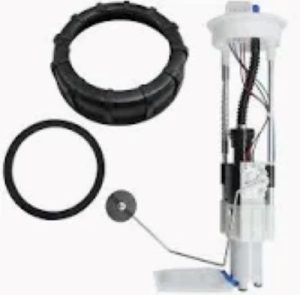Fuel pumps are essential to your engine running effectively and efficiently, and preventative maintenance every 50,000 miles or so can hep prolong their life while also making sure you are not left stranded by the side of the road in a no-start situation. The older the pump gets, the more important it is that you keep an eye on everything, especially after 100,000 miles when most pumps are visibly worn. By this point, components such as the rotor and valves can start to wear out, and throw fuel pressure consistency out of whack (resulting in a loss of power, diminished fuel economy etc).
Service intervals are the widest of all and likely mostly based on driving conditions except fuel quality, which could shorten pump life with contaminants that interfere in filters. Checking the filter every 20,000 miles lets the pump be used less as blocked filters make for a difficult working pump shortening its life. According to tests, a clogged filter can reduce pump performance up to 15%, eventually affecting fuel economy and engine power.
The other good way to check your pump's health is via a fuel pressure reading. Fuel pressure must often be within 30 to 80 psi ideally and using specialized equipment, mechanics can measure the fuel pressure in an engine. Low readings are indicative of pump wear, while fluctuating pressure is a hallmark sign of internal/pump problems. According to Automotive Professional Sam Harris from AutoExperts, “Fuel pump inspections prevent potential problems from becoming a painful reality costing untold thousands yet also ensures your engine performs as you expect.“

Recommend that fuel pumps be checked more often in hot climates where high temperatures add to the vapor pressure in fuel lines. Summer pump failures spike about 20 percent over average studies show. It is believed that the high heat ends up wearing out pumps prematurely especially in vehicles where fuel levels are kept low all the time. By maintaining at least 25% of fuel in the tanks, it will help to keep your pump cool and maintain fuel pressure by reducing wear so that it should last much longer.
Symptoms of a failing pump usually include strange noises; usually it is a whining noise that emits from the tank area, especially when you have less fuel in the vehicle. It would be best if you verified the following sounds that occur before your pump starts to make them. If no action is taken, the pump will fail completely and that can cost you between $300 and $1,000 to replace depending on the make or model of your vehicle.
To help improve the life of your fuel pump, you can refer resources like Fuel Pump that'll provide with top maintenance tips and will guide you through which kind of pumps to use for different vehicles. Routine 50k mile inspections can have a positive effect on keeping your engine running efficiently, with maximum fuel economy and less repairs down the road.